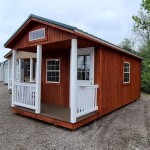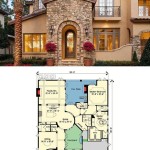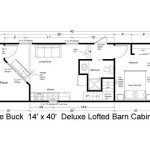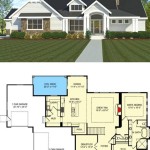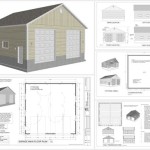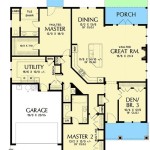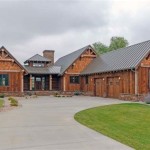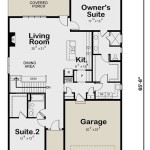Luxury Home Design Floor Plans: Crafting Spaces of Distinction
Luxury home design transcends mere aesthetics, representing a meticulous orchestration of space, function, and opulence. At the heart of this symphony lies the floor plan, the architectural blueprint that dictates the flow and character of the residence. A well-conceived luxury home design floor plan prioritizes not just the grand scale, but also the nuanced details that elevate the living experience. It's an intricate process involving careful consideration of site context, lifestyle requirements, and the integration of premium materials and finishes.
The design process begins with a thorough understanding of the client's aspirations and needs. This involves in-depth interviews and discussions to ascertain their lifestyle, aesthetic preferences, functional requirements, and desired level of privacy. The design team also analyzes the property's unique characteristics, including its topography, orientation, views, and surrounding environment. This information is then synthesized to create a preliminary floor plan that serves as the foundation for the design.
Luxury home design floor plans often feature open-concept layouts that promote seamless transitions between living, dining, and kitchen areas. This allows for optimal flow of natural light and facilitates effortless entertaining. However, the concept of open-plan living in luxury homes is often refined to include designated zones, subtly demarcated through changes in flooring, ceiling heights, or the strategic placement of architectural elements. This creates distinct areas within the open space, providing a sense of definition and intimacy.
The inclusion of specialized spaces is another hallmark of luxury home design. This might include a home theater, a wine cellar, a fitness center, a spa-like bathroom retreat, or a dedicated study. These spaces are designed to cater to specific lifestyles and hobbies, enhancing the overall living experience and adding to the home's value. The placement of these specialized rooms within the larger floor plan is carefully considered to ensure optimal functionality and privacy.
Attention to detail is paramount. This is reflected in the meticulous selection of materials, finishes, and fixtures. High-end materials such as marble, granite, exotic woods, and custom-designed cabinetry are commonly incorporated to create a sense of luxury and sophistication. Lighting plays a crucial role in shaping the ambiance of the space, with layered lighting schemes that incorporate ambient, task, and accent lighting to create visual interest and functionality. Intelligent home automation systems are often integrated to control lighting, temperature, and security, adding to the convenience and comfort of the home.
Prioritizing Functional Flow and Spatial Relationships
A key element of luxury home design floor plans is the careful consideration of functional flow. The arrangement of rooms is not arbitrary; it is meticulously planned to optimize movement and facilitate everyday activities. For example, the kitchen is typically located in close proximity to the dining area and outdoor entertaining spaces, allowing for seamless transitions between cooking, dining, and socializing. The master suite is often situated in a secluded wing of the house, providing a private retreat away from the main living areas.
The relationship between indoor and outdoor spaces is also carefully considered. Luxury homes often feature expansive windows, sliding glass doors, and outdoor living areas that blur the lines between inside and outside. This creates a sense of connection to nature and extends the living space beyond the walls of the house. Outdoor kitchens, fireplaces, and comfortable seating areas are common features that enhance the outdoor living experience.
The design also takes into account the specific needs of the occupants. For example, families with young children may require a playroom or a dedicated homework area. Empty nesters, on the other hand, may prefer a smaller, more manageable floor plan with easy access to all living areas on one level. The design team works closely with the client to understand their evolving needs and to create a floor plan that will serve them well for years to come.
Furthermore, the spatial relationships between rooms is crucial. The layout must facilitate both social interaction and opportunities for privacy. Carefully placed hallways, strategically positioned doors, and variations in ceiling heights can help to create distinct zones within the home while maintaining a sense of connection. The use of natural light is also maximized to create bright and airy spaces that promote a sense of well-being.
Integrating High-End Amenities and Custom Features
Luxury home design floor plans go beyond basic space allocation to incorporate high-end amenities and custom features that elevate the living experience. These features are tailored to the client's specific interests and desires, creating a home that is truly unique and personalized. A home theater, for instance, might include a state-of-the-art sound system, comfortable seating, and a large projection screen, creating an immersive entertainment experience.
A wine cellar is another popular amenity in luxury homes. These spaces are often designed to maintain optimal temperature and humidity levels, ensuring the proper storage and aging of fine wines. Wine cellars can range in size from small, walk-in closets to elaborate, climate-controlled rooms with custom shelving and tasting areas. The design often incorporates aesthetic elements such as stone walls, wrought iron gates, and dramatic lighting to create a visually stunning space.
Fitness centers are also common features in luxury homes, providing a convenient and private space for exercise and wellness. These spaces are typically equipped with state-of-the-art equipment, including treadmills, ellipticals, weight machines, and yoga mats. Mirrors, sound systems, and comfortable flooring are also incorporated to create a motivating and enjoyable workout environment. Natural light and ventilation are often maximized to promote a healthy and invigorating atmosphere.
The design and integration of smart home technology is also vital. This can involve automated lighting, climate control, security systems, and entertainment systems. These systems are often controlled through a centralized interface, allowing the homeowner to easily manage all aspects of the home from a single device. Smart home technology enhances convenience, comfort, and security, making the home more efficient and responsive to the homeowner's needs.
Considering Sustainability and Environmental Impact
Contemporary luxury home design increasingly emphasizes sustainability and environmental responsibility. Floor plans are now often crafted to maximize energy efficiency and minimize the home's environmental footprint. This involves incorporating passive design strategies such as optimizing solar orientation, utilizing natural ventilation, and incorporating daylighting techniques.
Sustainable materials are also prioritized, including recycled content, renewable resources, and locally sourced building materials. Water-efficient fixtures and landscaping are incorporated to conserve water. Energy-efficient appliances and lighting systems are selected to reduce energy consumption. Solar panels and other renewable energy sources may also be integrated into the design to generate clean energy on-site.
The long-term impact of the home on the environment is also considered. The design team works to minimize waste during construction and to create a home that is durable and long-lasting. Proper insulation, air sealing, and ventilation are implemented to improve energy efficiency and indoor air quality. Smart home technology is used to monitor and control energy consumption, allowing the homeowner to optimize energy usage and reduce their carbon footprint.
Beyond the technical aspects, the design also focuses on creating a connection to nature. Native landscaping is used to attract pollinators and support local ecosystems. Outdoor living areas are designed to encourage interaction with nature and promote a sense of well-being. The goal is to create a home that is not only luxurious and comfortable but also environmentally responsible and sustainable.
In summary, luxury home design floor plans are more than just outlines of rooms; they are carefully considered blueprints for creating exceptional living experiences. By prioritizing functional flow, integrating high-end amenities, and considering sustainability, designers craft spaces that are both beautiful and functional, reflecting the unique lifestyles and aspirations of their clients. The process requires a deep understanding of architecture, interiors, and an unwavering commitment to detail executed for the best possible outcome.

1st Floor Image Of Luxury 5 Bedroom Mediterranean Style House Plan 8860 Plans Mansion

Lochinvar Luxury Home Blueprints Open Floor Plans

Large Luxury Home Plans With S Houseplans Blog Com

8 Small Luxury House Plans We Love Blog Eplans Com

Luxury House Floor Plans Mansion Plan

Elegant And Functional Luxury House Plans Houseplans Blog Com

Luxury House Plans Build Your Dream Home

Mediterranean Style House Plan 4 Beds 5 Baths 6524 Sq Ft 930 325 Builderhouse Luxury Floor Plans

Luxury Mediterranean Home Plans Design Palacio

Small Luxury House Plans Houseplans Blog Com

